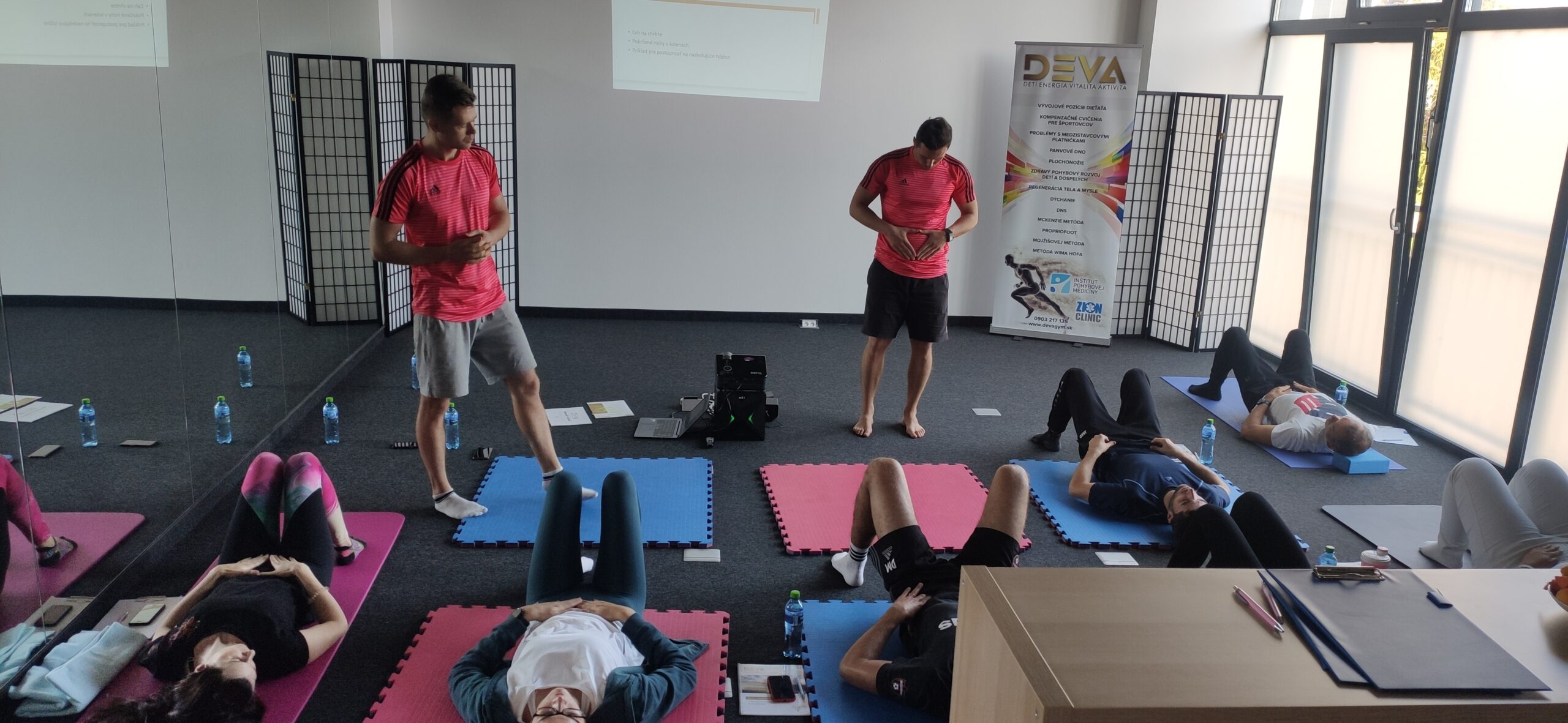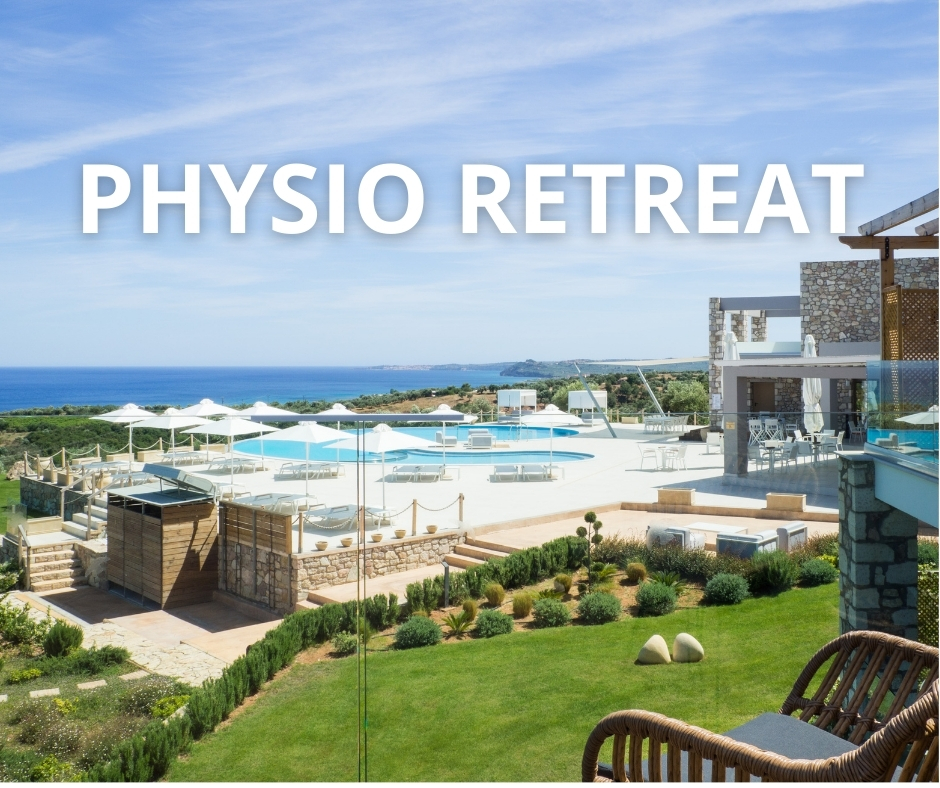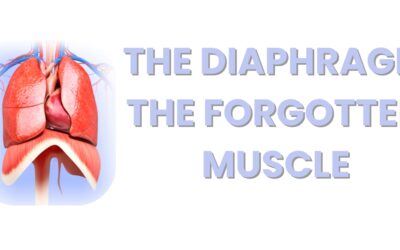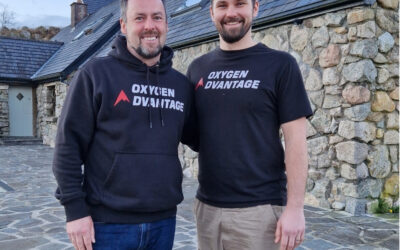“There’re so many myths out there about the core training that no one would have a look behind it. The idea has reached trainers and through them the public that the core means only the abs. There’s no science behind that and in the end, it is not functional…”
Why should you use the dynamic neuromuscular stabilization in your training process?
Do you remember trainings for diaphragm function improvement for better power and stability during the training or game?
NO?
Of course, it is not surprising. Dynamic muscular stabilization is a new scientifically based method which helps you to influence function of the muscles in their postural and locomotion function.
If you are an athlete, it will definitely improve your performance.
If you are coach, you will achieve not just improvement in muscle power and muscular stability but also a correct activation of diaphragm – the main breathing muscle.
What is a dynamic neuromuscular stabilization?
Our nervous system has control over human posture, walking and movement. Dynamic neuromuscular stabilization (DNS for short) is a method where the function of the muscles in their postural and locomotion function is affected. It is based from the developmental kinesiology of babies.
This concept was developed by Czech physical therapist Pavel Kolář, who based his work on knowledge of the great neurologists/physiatrists all of whom were giants in the 20th Century´s rehabilitation movement: Professors Vaclav Vojta, Karel Lewit, Vladimir Janda and František Vele.
Learn specific restorative physio movements on our DEVA Physio retreat.
Why is it important for better performance?
Core stability and exercises for core stabilization are often discussed topics in the field of sports and performance. Did you know that diaphragm – as a main breathing muscle can be trained and thus help to improve performance?
Yes, its function is not just with breathing. It has also function of stabilization and better body posture. The diaphragm is flat and is shaped like a parachute.
Diaphragm is a key component of core stability. As soon as you understand how to use it, it instantly improves its function and you can enjoy better results.
Subscribe to our YouTube channel and learn more for free >>>
Energy saver – delay lactic acid
The correctly trained diaphragm can save a quite big amount of energy to an athlete. The diaphragm can be trained to be stronger with proper training.
This will then save 2-3% of energy while running and during the high intensive sprints it can save up to 13-15% of energy. (1)
Of course it is well known that diaphragm has a respiratory function too.
At the inhale the diaphragm contracts and is pushed lower to the abdominal cavity which decreases the pressure in thoracic cavity and fills up the lungs with air.
There is strong evidence that the diaphragm – our main breathing muscle with other respiratory muscles may become exhausted during both short-term, high-intensity exercise and prolonged activities. (2)
Within respiratory muscles fatigue, blood flow is redirected from the legs in order to support the breathing muscles.
So, less blood flow to the working muscles means the legs become tired and the athlete is forced to slow down or break off exercise altogether.
Coaches or athletes should improve respiratory muscle strength because also studies on breathing techniques have shown that by reducing the effort of inhalation, blood flow to the legs increases by up to 7 percent. (3)
Most importantly, our breathing has to be functional and only then we can improve our movement.
There is no functional movement when dysfunctional breathing is present.
What should you do in order to improve the diaphragm function?
The diaphragm breathing muscle is required to perform respiration and to maintain postural control and stabilization during movement.
When the muscles work in balance, ideal intra-abdominal pressure is activated to protect the lumbar spine. (4)
Once you learn the proper activation of the core, then you can use it in the exercises like planks, squats, beard dogs and dead bugs.
Proper core activation is necessary for every movement of the human body. If you underestimate this fact, you will not improve.
Or to be more specific, you will improve, but only for the short amount of time and with greater risk of injury. The concept of dynamic neuromuscular control is a powerful tool for every athletic performance.
You or your athletes can benefit from it with:
- Better stability while moving, running and jogging
- Increased core strength
- Higher respiratory function – better oxygenation
- More energy saved while doing HIIT or sprints
- Improved posture in daily life and while training
- Injury prevention system to keep the athlete healthier
How to start with diaphragm training?
- 1. Lay down and put your hands on the area of your last two ribs
- 2. Breathe into this area slowly, consciously and in all directions
- 3. Watch the video here >>>
- 4. Read about warm-up manual for coaches and athletes to improve performance
Watch more about Dynamic Neuromuscular stabilization in the video below.
References:
Dajana Karaula 1, Jan Homolak 2, Goran Leko. Effects of hypercapnic-hypoxic training on respiratory muscle strength and front crawl stroke performance among elite swimmers. Turkish Journal of Sport and Exercise. Year: 2016 – Volume: 18 – Issue: 1 – Pages: 17-24
Noakes, T. (1991). Lore of running. Champaign, IL: Human Kinetics.
Ramsook, A., Koo, R., Molgat-Seon, Y., Dominelli, P., Syed, N., Ryerson, C., Sheel, A. and Guenette, J. (2016). Diaphragm Recruitment Increases during a Bout of Targeted Inspiratory Muscle Training. Medicine & Science in Sports & Exercise, 48(6), pp.1179-1186
Hodges, P. and Gandevia, S. (2000). Changes in intra-abdominal pressure during postural and respiratory activation of the human diaphragm. Journal of Applied Physiology, 89(3), pp.967-976






